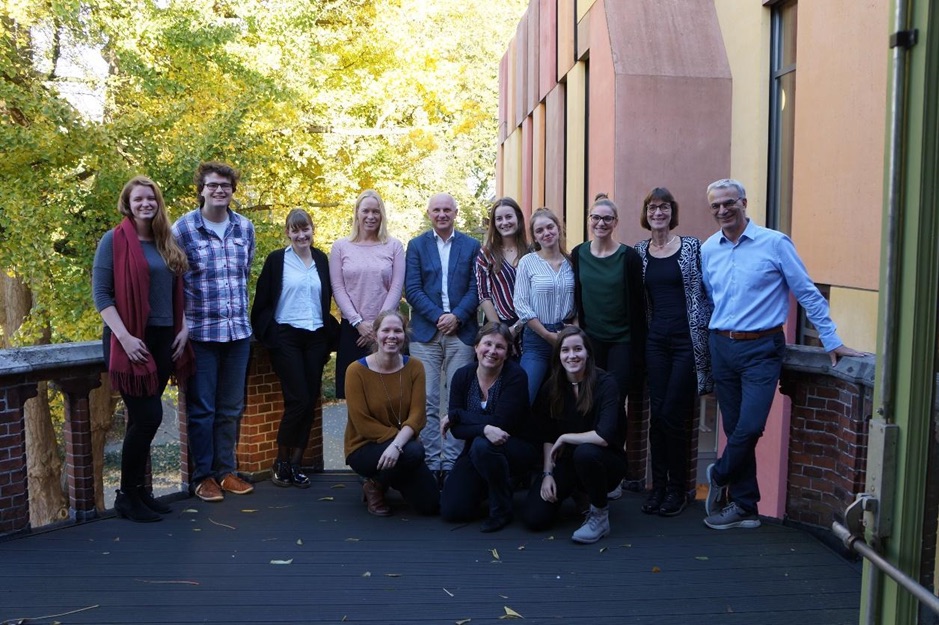
Diversity challenges in one of the biggest companies in the Netherlands
This post was written collaboratively by Hannah Elzinga and Myrthe ten Broeke (honors students in Sociology), together with Liesbet Heyse (assistant professor in Sociology) & Nina Hansen (associate professor in Social Psychology)
The labor market integration of refugees and people with different ethnic backgrounds has become a very important issue in Dutch society, especially since the increase in refugees coming to the Netherlands since 2015 (e.g., Rams, 2016). Diverse organizations, which may deal with surface (e.g., ethnicity, age) and deep level diversity (e.g., attitudes, political orientation), can profit from the different perspectives their employees bring, but can also run into problems when communication between members of different (cultural) groups does not work properly (e.g., Van Knippenberg, De Dreu, & Homan, 2004). Therefore, it is important to find out how to utilize the strengths of diversity while avoiding the pitfalls.
Diverse organizations can profit from the different perspectives their employees bring, but can also run into problems when communication does not work properly
To tackle the challenge of diversity effectively, it is important to combine insights from academic research with the experiences that businesses have in practice. To hear more about this, the interdisciplinary research team focusing on the labor market integration of refugees in the Netherlands (Nina Hansen, Liesbet Heyse, Marloes Huis and Anne Kuschel, Rijksuniversiteit Groningen, 2018) invited Robert Takken to the University of Groningen. Robert, Program Manager Diversity & Inclusion at PostNL, gave a workshop for a selected group of students and staff members from the Department of Social Psychology and Sociology to share his experience and challenges of cultural diversity at PostNL and to discuss current practice in businesses with scientists.
At PostNL, 60 percent of the staff and subcontractors has a multi-cultural background. In total, people from 121 nationalities are working in the organization. In addition to this surface-level diversity, other forms of diversity also influence the daily work in the company. For instance, the company also has an active LGBT+ community (Lesbian, Gay, Bisexual, Transgender/Transsexual plus). PostNL has initiated different programs and activities to manage and profit from diversity in the company. For example, a team of professionals received the task to create a work environment where everyone should feel included. This so-called PostNL Diversity & Inclusion team tries to integrate the various groups of employees in the organization and aims to reduce potential diversity conflicts. So far, they have implemented different trainings but also offer mediation between conflicting parties to improve intergroup relations. Robert Takken presented two specific activities how PostNL aims to monitor and improve inclusion on the work floor.
The Diversity & Inclusion team of PostNL can take a closer look at possible inclusion problems in the company and discuss ideas to intervene and improve the current situation
First, the Diversity & Inclusion team regularly monitors the feelings of inclusion of its employees through a survey. With this survey, the Diversity & Inclusion team can take a closer look at possible inclusion problems in the company and discuss ideas to intervene and improve the current situation. Second, PostNL uses a psychological test to analyse the composition of their teams to learn more about the diverse deep-level composition of teams. Prior to the workshop, we also filled in this online test, the so-calledDISC method (Slowikowski, 2005). The letters in DISC represent the four ‘categories’ of people (although most personality psychologists tend to think in terms of continuous traits rather than discrete categories, category models remain popular among practitioners). Every category is based on the character of the individual in a work team and is visualized with a colour. The first category (D) contains the characteristics dynamic, red. The second category (I) is known as inspiring and interactive, yellow. The third category (S) is stable and supportive, green. The last category (C) is correct and conscientious, blue. The theory behind the DISC method is that every work-team should be a mix of the four categories, because all the required characteristics will be presented in the work team to foster the best cooperation and outcomes.
Previous research suggests that it is unclear if personality tests can increase team performance, but the interaction with team members during a session can create a better understanding of the different personalities in the team
During the workshop, we had the possibility to find out about our personal DISC and the colours of our work team by filling in an online questionnaire asking us to reflect on our personal traits and possible responses to hypothetical situations at work. Based on our individual answers, our individual and team DISC-profiles were calculated. Thus, we went through the same process as employees of PostNL, in a very interactive and fun way. Previous research suggests that it is unclear if personality tests can increase team performance, but the interaction with team members during a session can create a better understanding of the different personalities in the team (McKenna, Shelton, & Darling, 2002). And indeed, the discussion amongst us workshop participants about the different team role was very insightful to analyse the composition of our team and discuss how we would function under pressure, such as (even) more work pressure. We vividly discussed the applicability of such a test to different work environments. For example, academics in a university have different tasks than accountants in a company, and hence a team of academic and accountants might benefit from a different team composition.
“I found this an inspiring and insightful day! I especially appreciated to learn how an organization such as PostNL takes into account the different ‘team profiles’ that their employees have and what this may mean for team composition. I also appreciate the fact that PostNL employs people with many different cultural backgrounds and that managers are sensitized regarding what this may mean for communication and management styles.”
Liesbet Heyse, assistant professor in Sociology
The DISC method helped us reflect on how we are functioning within an academic environment. Insight in the practices of PostNL led to an interesting discussion on how surface-level diversity is managed on usual days and in times of crisis at PostNL. The day ended with a short discussion what kind of approaches science could offer to also focus on deep-level diversity at the work place.
“I really enjoyed this workshop! The combination of learning about our own group with learning about PostNL worked out really well. It was inspiring to be able to get insight into the whole system from theory and personality tests, to actual strategies and implementations of new policies.”
Aurora Krogh, master student in Sociology
Image credit: photo by Mrs. Takken, 2018.
References
McKenna, M., Shelton, C., & Darling, J. (2002). The impact of behavioral style assessment on organizational effectiveness: A call for action. Leadership and Organization Development Journal, 23,314-322.
Rams, A. (2016). Van Syrië naar Nederland: een discoursanalyse van de representatie van Syrische vluchtelingen in het NOS Journaal (Bachelor’s thesis).
University of Groningen (2018). Interdisciplinary researchteam. Geraadpleegd op: https://www.rug.nl/gmw/research/labor-market-integration-of-refugees/team?lang=en
Slowikowski, M. (2005). Using the disc behavioral instrument to guide leadership and communication. Aorn Journal, 82(5), 835-8.
Van Knippenberg, D., De Dreu, C. K. W., & Homan, A. C. (2004). Work group diversityand group performance: An integrative model and research agenda. Journal of Applied Psychology, 89, 1008-1022.



